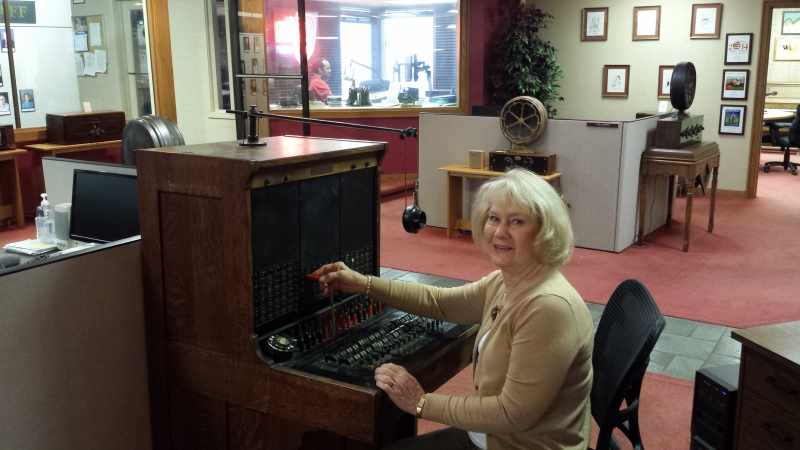Childhood hunger rampant in parts of Western North Carolina
Emily Weaver, Carolina Public Press
A 3-year-old boy with long raven hair cried April 3 inside the Living Waters Food Pantry and Resource Center, which seeks to combat hunger in Cherokee. He squirmed on the hip of his mother, stretching for a toy as she reached for a can of vegetables.
He got his toy, and she got their food at the tribal pantry that serves two counties, both plagued with poverty.
One in every four children under the age of 18 in Swain and Jackson counties live in poverty, according to the U.S. Census Bureau. Even more live in households that the U.S. Department of Agriculture has deemed “food insecure.”
“It’s very hard,” said Lisa Russell, who runs the Living Waters Food Pantry and Resource Center within the Qualla Boundary, home to the Eastern Band of Cherokee Indians.
“I mean I’ve had young, especially young mothers who will come up, and somebody will holler, ‘Lisa, you’ve got a new one around the corner.’ I’ve had them standing here, and they’ll be crying, ‘I’ve never had to ask for help.’ I say, ‘Baby, you’ve come to the right place. That’s what we’re here for. We’re here to get you on your feet.’”
The Living Waters pantry and many others like it are in high demand across Western North Carolina, where MANNA FoodBank distributed more than 18 million pounds of food to hungry clients last year.
Swain County was ranked 99 out of the state’s 100 counties when it came to food security among children in the Public School Forum of North Carolina’s Center for Afterschool Programs’ Roadmap of Need 2018.
Several other western counties also ranked poorly, including Clay at 89, Yancey at 88, Mitchell at 85 and Jackson, McDowell and Macon tied for 75.
“In Western North Carolina, one in four children are food insecure,” said Amy Sims, the western zone coordinator and agency relations manager at MANNA. “But there are pockets where as many as four in five kids don’t have enough healthy food to eat. We look at the rates of use for the free school lunch program in each of the 16 counties that we serve, and there are more than 45,000 kids on the program, a number that continues to climb.”
One of MANNA’s primary tools to address childhood hunger is through its MANNA Packs and Summer Packs programs, which provided 186,716 bags of food to kids last fiscal year, she said.
“Children are our future, and there is no better investment than providing those in need with the healthy food they need for a solid foundation in life,” Sims said.
Isabella Cole, 2, waits as a volunteer packs up a to-go dinner at The Giving Spoon at Bryson City, a nonprofit organization whose mission is to provide hot, nutritious meals to the community. Matt Rose / Carolina Public Press
Hunger and learning
Nearly a third of the children in Swain County live in food-insecure homes. According to the county’s school nutrition director, hunger can hinder their ability to learn.
No Kid Hungry North Carolina, which recently honored Swain County Schools for its summer meals program, agrees.
“Hungry children have trouble concentrating, get more headaches and infections, are more likely to be hospitalized and are less likely to perform well on athletic fields and in classrooms. It’s simply much harder for children at risk of hunger to thrive,” said Tamara Baker, project and communications director with No Kid Hungry NC, an initiative based at UNC Chapel Hill’s Center for Health Promotion and Disease Prevention.
“School breakfast and strong instruction mean more graduations,” she said. “Studies show that a student who eats a healthy breakfast scores up to 17 points higher that day on a math test. School principals tell us that eating school breakfast improves focus, discipline and academic performance for kids.”
Every child in both of Swain County’s elementary schools is served free breakfasts and lunches every day.
“All kids eat free,” said Jennifer Brown, the county schools’ nutrition director. “They all have the option to have breakfast and lunch. The middle and high schools run at about 60 percent free and reduced lunches.”
But whatever isn’t eaten or taken by the children at school is thrown away.
“My granddaughter said, ‘Nan, … you wouldn’t believe the food they’re throwing away here at the school,’” said Kathleen Burns, a former social worker and mental health worker, who has since founded The Giving Spoon community meals site in Bryson City. Burns’ granddaughter teaches at West Elementary.
Burns said she and others working on the problem convinced teachers to start saving their untouched leftovers for her to pick up. The extra cartons of milk, juices, cheese sticks and other prepackaged food items that would have gone in the trash were stored in a refrigerator in the teachers lounge.
Burns drove to the school to pick it all up and took the items to a community cooler on the porch of The Restoration House in Bryson City. The cooler, in addition to a pantry called The Blessing Box on the porch, held food, drinks and other items that are free to anyone 24 hours a day, seven days a week.
“That’s what really started the trend of people … coming by there to get those milks,” Burns said.
Then word got around that only certain people were taking all of the food, she added, and “the refrigerator went away.”
Burns started taking the leftovers herself to struggling neighborhoods until the efforts to store the items became a hassle.
“I’d really, really like to get that going again,” she said. “If there is food, there is no reason why food should be thrown away.”
Brown says she and others place the leftovers from breakfasts served in the classrooms on a share table offered to students.
“Kids can get extras,” she said. “What is not taken does get thrown away. In terms of food that comes back to the cafeteria, if it is not a shelf-stable individually wrapped food, it is required to be discarded by health department regulations.”
Brown says she and others are looking at ways to reduce the waste.
“I was doing that, and then my focus kind of got on this,” Burns said, as she sat in an office inside Bryson City Presbyterian Church, where she started The Giving Spoon, in February.
“We have a lot of grandparents raising grandchildren in this county — lots,” Burns said.
“They don’t get a lot of support. They’re on fixed incomes. And a lot of times they’re elderly.”
The federal government’s Temporary Assistance for Needy Families and Women, Infants and Children programs weren’t designed with the elderly providing care to children in mind.
The elderly and children under the age of 18 make up more than 40 percent of Swain County’s population.
To reach the children in need, Burns put a call out to teachers on Facebook, encouraging them to invite their students out to dinner at The Giving Spoon.
“Our meals on Thursday nights are free to anyone who comes through that door. No questions asked,” she said.
“We have two kids that come on a regular basis with their mom every week that we’ve been open. One child came with her grandmother one time. And we’ve had some children volunteers to come with their parents. But we’re hoping to get more children in, and I’m starting to work with some of the school social workers in getting information out that we’re available now.”
Swain County Schools also offers an after-school supper program for kids. The program once only offered snacks, but now meals are served to every child for free.
Dante Shields, 8, left, and Sydney Toomey, 11, finish eating at The Giving Spoon, a nonprofit organization whose mission is to provide hot, nutritious meals to the community in Bryson City. Matt Rose / Carolina Public Press
Summertime food in Swain
“The cafeteria ladies, they tell me stories about how kids will come in on a Monday morning, and they’ll get to school hungry so, you know, you just wonder what’s going to happen to them over the summer,” said Brown, the Swain County Schools nutrition director.
The district has been honored for its summer meals program.
“We actually have a very big program,” she said. “We partner with about 23 sites. All of our cafeterias are open in the summer, except the high school won’t be open this summer because of the renovations. But we partner with churches and some community organizations and some camps in Cherokee. We do a lot of meals.”
Brown says The Giving Spoon offers breakfast, lunch and supper to children throughout the county for free. Adults can buy plates for $3, she said.
“We know that kids decline in their learning over the summer because they come back to school in the fall behind where they left off,” Brown said in a Facebook video message the district posted on March 4. “Part of this is due to inadequate nutrition over the summer months.”
For those who couldn’t make it out to the cafeterias, Burns said, the teachers brought the food to them.
“They were bagged lunches, and they (the teachers) would go to the poor communities in this county,” she said. Her granddaughter was one of the teachers who helped.
“My granddaughter said that at one place (an old motel) … kids would be jumping out the windows or coming out the door, you know, just coming to get their meals,” Burns said. “They knew it was their mealtime. Those are the ones that needed the meals, and to take it out and hand it out to them, that was great.”
“Swain (County) is the No. 1 county in our state for serving summer meals to the highest number of their percent of need,” said Baker of No Kid Hungry NC. Meeting more than 45 percent of the needs for summer meals through its federal summer nutrition program, the district’s efforts exceeded those in every other county.
“Next closest was Transylvania County with 25.12 percent met,” Swain County Schools announced in a Facebook post on April 22. “We currently have 19 sites that served 48,313 total meals during the summer of 2018, which translates into some 915 students being served daily.”
























